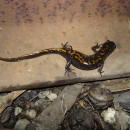About Us
Don Edwards San Francisco Bay National Wildlife Refuge is located in a vast cultural and natural landscape. As part of the San Francisco Bay National Wildlife Refuge Complex, a complex of seven refuges spanning over 125 miles and 11 counties, the protected habitats and wildlife are just as diverse as the urban communities surrounding them. Our location gives us the perfect opportunity to connect, work with, and serve the public, schools, and nearby community groups.
The first people who called the greater San Francisco Bay Area their home are the Ohlone and Miwok people, made up of eight primary language groups, across as many as 58 tribal bands. The Bay’s temperate climate and plentiful food provided a secure place for families to thrive for over 15,000 years. The Don Edwards San Francisco Bay National Wildlife Refuge spans the traditional ancestral lands of four tribal groups; the Lamchin, Puichon, Alson, and Tuibun – and this area remains an integral part of their culture.
Today, the San Francisco Bay Area hosts almost 8 million people, living in three major urban cores (San Francisco, San Jose, and Oakland) and more than 100 communities surrounding that same vibrant, thriving estuary.
The Refuge manages over 30,000 acres of public lands, 38 miles of trails, a Visitor Center, and an Environmental Education Center, all adjacent to multiple ethnically and economically diverse communities. Created in 1972, largely as the result of grassroots efforts by the local community, Don Edwards San Francisco Bay NWR was one of the first, and today remains our nation’s largest Urban National Wildlife Refuge.
Our Mission
The mission of the Don Edwards San Francisco Bay National Wildlife Refuge is to work with diverse urban communities to inspire stewardship through educational and inclusive visitor engagement, while protecting and restoring a resilient bayland ecosystem that benefits both wildlife and people.
Our History
1972- The San Francisco Bay National Wildlife Refuge was established as the first Urban Wildlife Refuge.
1979- The Visitor Center opened in Fremont, California and the Environmental Education Center opened in Alviso, California.
1995- The refuge name changed to Don Edwards San Francisco Bay National Wildlife Refuge by President Clinton to honor Congressman Don Edwards who was pivotal in the establishment of the refuge.
2004- South Bay Salt Pond Restoration Project, the largest tidal wetland restoration project on the west coast begins. When completed it will restore 15,100 acres of wetland habitat.
Other Facilities in this Complex
Don Edwards San Francisco Bay National Wildlife Refuge is managed as part of the San Francisco Bay National Wildlife Refuge Complex. Other refuges in the San Francisco Bay National Wildlife Refuge Complex include: Salinas River, Ellicott Slough, Farallon Islands, Marin Islands, San Pablo Bay, and Antioch Dunes National Wildlife Refuge.
The Refuge Complex headquarters is located at 1 Marshlands Rd. Fremont, CA. 94555.
A National Wildlife Refuge Complex is an administrative grouping of two or more refuges, wildlife management areas or other refuge conservation areas that are primarily managed from a central office location. Refuges are grouped into a complex structure because they occur in a similar ecological region, such as a watershed or specific habitat type, and have a related purpose and management needs. Typically, a project leader or complex manager oversees the general management of all refuges within the complex and refuge managers are responsible for operations at specific refuges. Supporting staff, composed of administrative, law enforcement, refuge manager, biological, fire, visitor services, and maintenance professionals, are centrally located and support all refuges within the complex.






